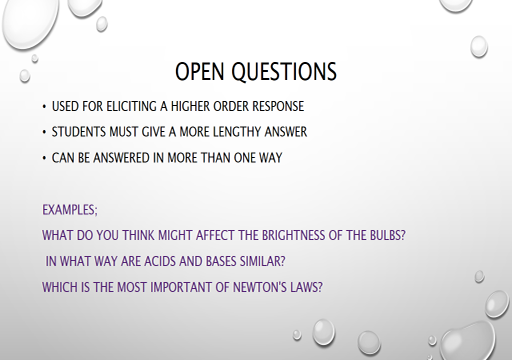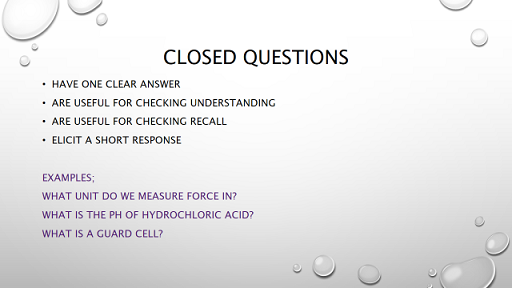1 Thinking about different types of questions
There are many ways to classify question types. The easiest of these classification systems sees questions as being either open or closed. Figure 1 shows the difference between open and closed questions.
There is a tendency for teachers to ask too many closed questions, which do not require students to think.
‘Open’ questions cause students to go beyond memory recall and help them to develop more complex thinking skills such as summarising, comparing, contrasting, explaining, analysing and evaluating.
Often a closed question can helpfully be followed up by a more challenging open question. For example, ‘What is the pH of hydrochloric acid?’ could be followed up by ‘How do we know?’ or ‘What does that tell us about hydrochloric acid?’
Activity 1: Devising good questions
This activity is for you to do as part of your planning. It would be helpful to do the activity with a colleague.
Expert teachers ask good questions. In order to become an expert, you need to practise. Before you start to teach the topic ‘Why do we fall ill?’, plan a set of questions that you might ask your students to find out what they already know. You will need some simple closed questions that will establish if they understand key words such as ‘virus’ or ‘infection’. You will also need more open questions that require longer answers and will help you establish how much they already know about how diseases spread and can be treated.
When you have planned some questions, use Resource 2 to plan how to ask your questions.
Why this approach is important


